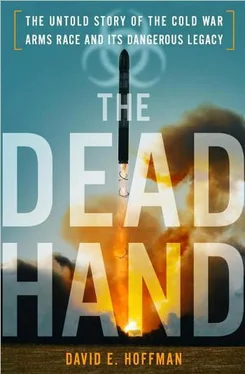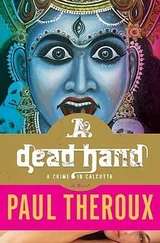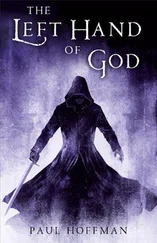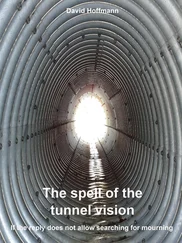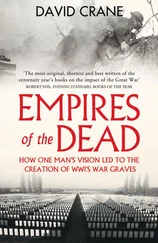Shevardnadze claimed the issue of Soviet compliance had been taken up “by the political leadership of the country,” and “special decisions were taken” followed by instructions “to take all measures to provide rigorous compliance with this international agreement.” In fact, the decisions were taken to hide the incriminating evidence. Shevardnadze also said, in a bit of window dressing, the Soviet Union was thinking about enacting new legislation that would make it a crime for any actions that “will” violate the convention—in the future.
Shevardnadze, following the script, promised Baker that the Soviet side was ready “to arrange a visit to any of the biological facilities named by the American side in the U.S. memo.” And, he said, the Soviets would even go so far as to allow American scientists to “work at the Soviet biological facilities.” In a page that was not numbered, but apparently added at the end of his presentation, Shevardnadze suggested both sides work out a program of joint scientific work on defense against biological weapons. Shevardnadze also gave Baker a written paper containing the Soviet response to his questions.
Shevardnadze had been aware of, and participated in, discussions of the scrub-down and cover-up strategy to hide Biopreparat in 1989. In his memoir, Shevardnadze alluded to this moment. “If anything, Jim could have had some doubts about my honesty, in connection with an unpleasant story I do not intend to tell here.” He added, “Lying is always unproductive.” 45
Back at the CIA in Washington, a decision was made not to punish the Soviets but to take up their offer of visits. “We said to ourselves, about Shevardnadze, he’s lying, but let’s not decide to ram it up their ass,” MacEachin recalled. “The number one objective for U.S. national security is to eliminate, and get onsite inspections. We knew if we accused, there would be 900 meetings of finger-pointing without anything happening.” 46In the months that followed, working in total secrecy, Baker and Shevardnadze negotiated the details of the first visits to suspected Soviet biological weapons sites. 47But they had many other pressing demands to cope with.
On August 2, while Baker and Shevardnadze were meeting privately, they were interrupted by Baker’s spokeswoman Margaret Tutwiler, who handed Baker a message saying that Iraq had invaded Kuwait. Baker enlisted Shevardnadze and Gorbachev in what became a concerted, months-long effort to build a diplomatic coalition against Iraq. Gorbachev was reluctant to see the use of force and kept hoping that Saddam could be talked into pulling out of Kuwait. Nevertheless, when Baker came to Gorbachev’s official country residence at Novo-Ogaryovo on November 7, the Soviet leader said, “What’s really important is that we stick together.” 48
In these hectic months, a treaty reducing troop levels in Europe was signed, an agreement was reached on the unification of Germany and Gorbachev won the Nobel Peace Prize. At home, Gorbachev sank. He tried to fashion a new Union Treaty to hold the restive republics together, while Yeltsin urged them to grab all the independence they could. Chernyaev observed that “Gorbachev seemed truly at a loss, the first time I’d ever seen him in that state. He could see power slipping from his hands.” 49Shevardnadze brooded over the growing strength of reactionary forces, especially the “men in epaulets,” and felt Gorbachev was abandoning their shared cause of democratic reform. “The only thing I needed, wanted, and expected from the President was that he take a clear position: that he rebuff the right-wingers, and openly defend our common policy,” Shevardnadze recalled. “I waited in vain.”
On the morning of December 20, after a sleepless night, Shevardnadze wrote out a resignation. He called his daughter in Tbilisi and told her, then informed two of his closest aides. He left for the Kremlin. 50The Congress of People’s Deputies fell into a stunned silence as he spoke. Shevardnadze complained bitterly of a lack of support; the reformers had scattered. “Dictatorship is coming,” he warned. Gorbachev, sitting nearby, listened impassively. When the speech was over, he clutched his forehead and looked down at his papers. 51
In the autumn of 1990, another Soviet defector, a medical biochemist, sought asylum at the British Embassy in Helsinki. He had once had top-secret clearances in the Soviet system and worked at Obolensk in the very early years when it was being carved out of the forest. He later worked in the antiplague system, and described to the British how pathogens were harvested from it for use in biological weapons. The defector’s information reinforced Pasechnik’s revelations. 52
Very early in the morning on Monday, January 8, 1991, Davis and Kelly stood in Moscow in the bone-chilling cold. Seven American and five British representatives—experts on biotechnology, microbiology, virology, arms control verification and the structure of the Soviet program— were about to begin the very first visit to suspected biological weapons sites. Davis, usually sharp and no-nonsense, was a bit groggy. It was deep winter, absolutely frigid, and he had uncharacteristically overslept. The British-American team had arrived in total secrecy; Davis had not even told his wife where he was going or why. Standing in front of an aging yellow bus, Davis was introduced for the first time to Alibek, who was put in charge of the visit. Alibek, smoking a cigarette, wore a brown wool sweater while everyone else on the Soviet side was in suits and ties. Alibek spoke no English and had never met an American or Briton. He recalled his surprise that the Westerners “knew a lot about us,” and one asked why “Biopreparat chief Kalinin” wasn’t present. Alibek lied, “Unfortunately, Mr. Kalinin is extremely busy.” Kalinin had instructed him never to even mention his name. 53
The bus set off for the Institute of Immunology at Lyubuchany, 35 miles south of the Kremlin, which did support work for Obolensk. The bus crawled in a snowstorm, and suddenly Davis heard a loud bang. The bus windshield shattered from the cold. “It was bloody awful,” Davis recalled. “This is the big game. This is day one. We haven’t even reached the place yet, and we have to slow down because we can’t keep going at speed, or we’d all die of exposure. We’re shivering now, probably doing 15 miles per hour, and we arrive late, frozen to death.” Alibek said the Soviet strategy for the visits, worked out over the previous weeks, was to hide as much as possible, and “waste as much time as possible” with meals, drinks and official speeches, to limit time for the visitors to carry out inspections. Vodka and cognac were ordered up at every stop. Popov said “there was a huge training program” before the visits so that every employee knew to repeat the “legend” that they were working only on defense against pathogens. “Every department and every lab had several meetings,” Popov recalled. The first stop was easy—the institute had no dangerous pathogens on hand.
Next came Obolensk, the compound in the woods that had played such a central role in the work of Domaradsky and Popov. When they arrived January 10, Davis noted that, although thousands of people worked there, the halls were eerily empty. Urakov, the stern director who had clashed with Domaradsky, welcomed them with a long speech, sandwiches and drinks. When the Westerners pressed to get to work, Urakov warned them that if they wanted access to the floor containing Yesenia pestis , they would have to be quarantined for nine days on site. The point was to discourage the visitors from asking for access. Alibek had actually given orders the previous weekend for Obolensk and Vector to be totally disinfected, so the risk of exposure to dangerous pathogens was very low. Still, Urakov’s threat worked, and they did not ask to go there. 54
Читать дальше
